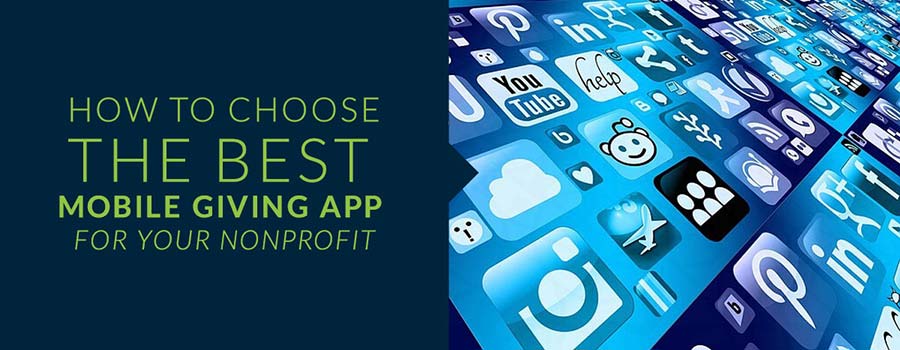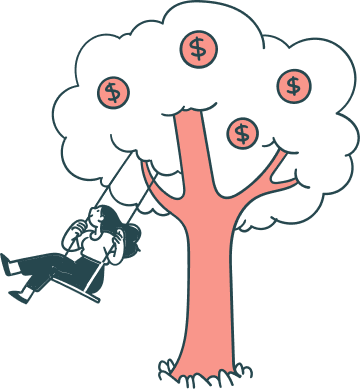We’ve put together a list of the top ten questions you need to consider when shopping for a mobile giving app:
#1. What exactly are you looking for in a mobile app?
#2. What would be the easiest app for your donors to adopt?
#3. Would you consider offering more than one way to give?
#4. What would the monetary cost be? What about the cost in time?
#5. How would your organization need to shift to incorporate the new technology?
#6. What customer service needs would you have?
#7. Would your fundraising team have to expand to accommodate the changes?
#8. Would the new information seamlessly integrate into your CRM?
#9. How soon could you access donations?
#10. Does the platform offer security and peace-of-mind?
If you happen to be a church that’s looking for an online tithing tool, check out this resource just for you!
#1. What exactly are you looking for in a mobile app?
When shopping for the best mobile app, the first place you actually need to look is within your own organization.
It may seem somewhat counterintuitive that the first place you have to research is your own backyard. But bear with us.
Because there are so many choices out there, it’s important to note first and foremost what you’re hoping to achieve.
Are you a large organization who just wants to offer an alternative way for your existing donors to give?
Are you a smaller nonprofit that’s looking to reach new donors on the go?
Regardless of who you are and where you are: you can’t possibly pick the perfect mobile giving app if you don’t first take a step back and assess your nonprofit’s needs.
#2. What would be the easiest app for your donors to adopt?
While you’re assessing what your nonprofit’s fundraising needs are, be sure that you take a look at your typical donors.
How have they given to your organization in the past?
Have any of your donors expressed interest in giving via mobile?
You can easily find out if your donors would be on board with mobile giving by surveying them. Conversely, you can also examine the demographics of your organization.
Do you have a lot of younger donors for whom text-to-give would be enticing?
Or do you have an older constituency who might be more partial to an easy-to-use online donation page, like the one below?
Whatever the case: you should take a poll of your existing donor base before you choose or settle on any one type of mobile app.
#3. Would you consider offering more than one way to give?
There are a dozen ways to use mobile giving apps, and within those ways there are hundreds of ways to customize your approach.
It’s perfectly acceptable to offer just one way to give, if that’s what makes sense for your organization.
But if you want to offer multiple options to fit the needs of a diverse donor base, then it’s something you need to consider. The optimal mobile giving app for your nonprofit would encompass all of these facets.
There are several platforms that offer all of these options and more:
-
- Mobile and online donation pages
- Email donation buttons
- QR code promotions
- Text-to-give
- And more!
Within those options, you’ll want to be sure that your nonprofit can customize each approach. There are few things worse for mobile giving than donation pages that don’t fit in with your organization’s overall internet presence and look.
#4. What would the monetary cost be? What about the cost in time?
It depends. With some companies, you’ll be charged a flat fee, and with others the cost of the mobile giving platform changes based on the size of your organization (among various other factors).
Some companies will have you request an estimate or call in for a quote. Others will tell you right up front that the fee is $50-$100 per month.
Also, depending on the type of organization you represent, you can find deals. Some companies offer discounts to churches and other faith-based organizations.
There are even some sites that will allow you to run a free trial of their mobile giving platforms, just so you can be sure.
All in all, your organization should look into the different costs that mobile giving presents, both in time and money. If a mobile giving app takes more time to set up than your organization can afford, then it may not be the app for you.
That being said, the cost in time and money that you may incur at the outset should be made up for by the increased revenue that your new mobile giving app will bring in.
#5. How would your organization need to shift to incorporate the new technology?
As with any major transition within your nonprofit, incorporating a new avenue for fundraising should cause you to shift the way you do things a little bit.
Before you commit to any mobile giving app, you need to make sure that your nonprofit is in a good place to shift.
You should also make sure that the app you choose isn’t going to rock the boat too much.
What your nonprofit needs is a happy medium: a mobile giving platform that provides payment processing should you need it or steps back if you have your own methods. One that works with your CRM or one that provides easily exportable data.
Whatever your needs are, you’ll want to make sure that your mobile app satisfies them–and that you’re not bending over backwards to incorporate the new technology.
#6. What customer service needs would you have?
With most mobile giving platforms, there is customer support that should be included in the monthly subscription.
Generally, there is a support hotline that can be called during business hours, and the rest of the time, there are online portals that accept questions and provide guidance.
The customer support can be called by the organization or by anyone who happens to use the software to donate.
If you have a number of Spanish-speaking members in your organization, there are platforms that specifically provide bilingual support.
All of that being said, before you choose a mobile giving app, you should figure out what your customer service needs might be.
Will you need someone 24/7?
Do you foresee needing little to no help? Or are you anticipating needing more guidance until you can be more independent?
These are the questions you should ask yourself before you start to compare different platforms. In the end, though, it’s better to have a safety net. It never hurts to have too much support.
#7. Would your fundraising team have to expand to accommodate the changes?
When you’re looking into adopting a new means of fundraising, it’s important to figure out if that change will require expanding your team.
Do you have someone who could take on the tasks associated with getting your mobile fundraising campaigns up and running?
Would you need to hire a new team member, or could you reallocate some of your existing staff’s time?
Taking on a mobile giving app doesn’t necessarily have to shift your nonprofit’s internal structure. But if it does, you want to be sure that you know what that might look like, so you can prepare accordingly.
#8. Would the new information seamlessly integrate into your CRM?
Since most platforms are all-inclusive now, meaning they provide every facet of the mobile giving experience (email, text, mobile web), it’s extremely easy to keep track of all of the donations you’ve made across the board.
It’s also easy for your nonprofit to have an idea of all of the different ways people are donating, which is useful for planning future fundraisers.
Top-rated mobile giving apps will provide easily exportable data for your nonprofit to integrate into its CRM.
Be on the look-out for the companies that can offer this level of seamless integration.
#9. How soon could you access donations?
Once upon a time, cell phone companies were the only mobile fundraising game in town.
Not only would they skim a little off the top of all of the donations made via text, but they would also hold all of the donations for a period of no less than 45 days!
The average wait for most nonprofits was upwards of 90 days before they saw any money.
Standards have changed, and mobile giving apps now offer nonprofits the ability to access funds within a couple of business days.
Make sure you ask your mobile giving platform provider about the time it takes to access donations.
Note: if your provider is part of the Mobile Giving Foundation, they may still adhere to some of the rules and practices which have traditionally limited text-giving services. For more information on the Mobile Giving Foundation and how they can impact your fundraising, read this helpful resource.
#10. Does the platform offer security and peace-of-mind?
With the industry-leading technology backing the best mobile giving apps, mobile giving is 100% secure for your donors and for your organization.
The top companies will let you know if they’re something called, “PCI-compliant.” Without going into the technical jargon that this entails, suffice it to say that Level 1 PCI-compliance guarantees the highest level of security on the market today.
Fraud analysis and encrypted data should also be standard.
You also never have to worry about your email getting hacked; no critical information (like credit card info, date of birth, etc.) is ever transmitted through email. All of that private information should be stored in PCI-compliant vaults–which are just as secure as they sound.
Now that you’ve taken all of these factors into consideration, you’re ready to get out there and find the best mobile giving app for your organization!
For even more on mobile giving, check out these resources:
- Text-to-Give Guide – Learn the nuances of text-to-give software and discover how you can implement this technology at your organization.
- Mobile Giving Guide – Our thorough guide takes you through every aspect of mobile giving, from the basics to how to find a provider and more!
- Buyer’s Guide to Fundraising Software – Like any fundraising software, text-to-give software is a major investment. Learn all you can before you start shopping!















